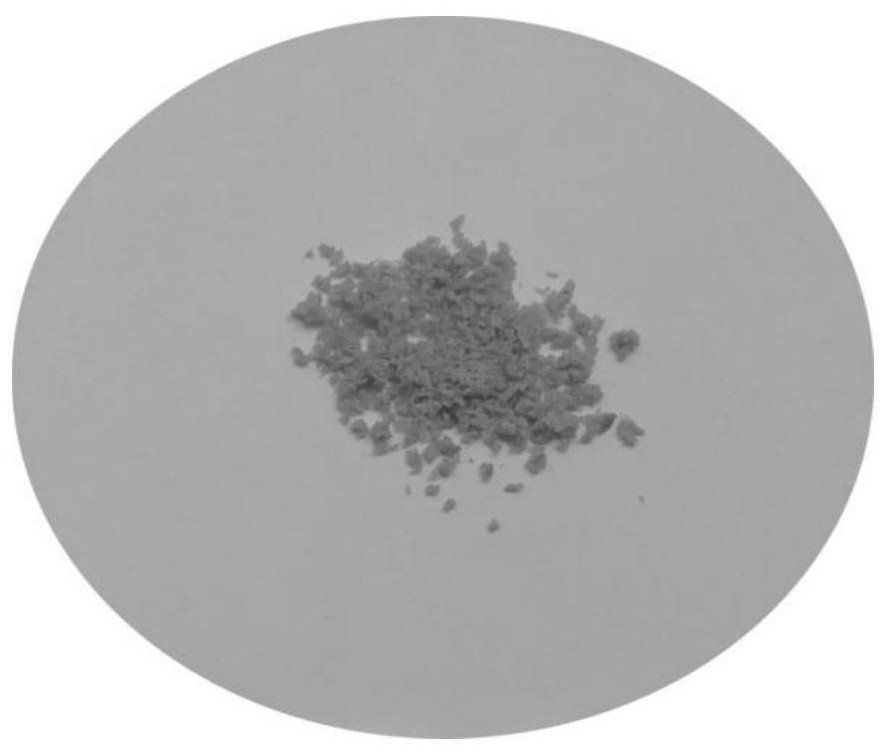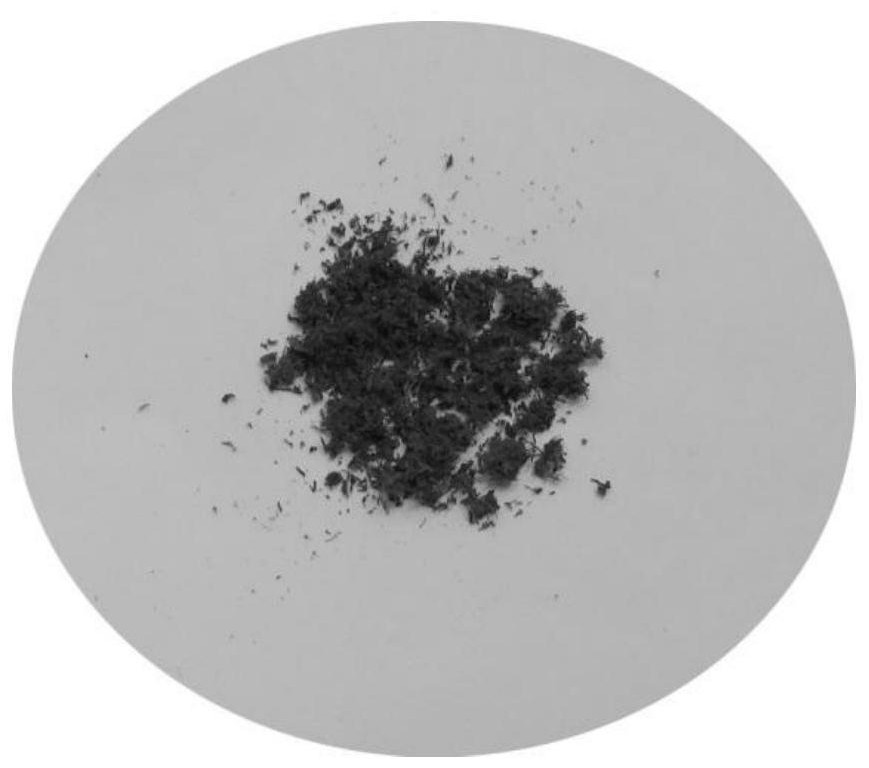A preparation method of bismuth-based collagen fibers for efficiently capturing iodine vapor
A technology of collagen fibers and fibrils, which is applied in the field of preparation of bismuth-based collagen fibers to efficiently capture iodine vapor, can solve the problems of high practical application cost, complicated preparation process, and low recycling rate, and achieve low price and simple preparation process , The effect of easily degradable treatment
- Summary
- Abstract
- Description
- Claims
- Application Information
AI Technical Summary
Problems solved by technology
Method used
Image
Examples
Embodiment 1
[0039] A preparation method for a bismuth-based collagen fiber efficiently capturing iodine vapor material, characterized in that it comprises the following steps:
[0040] Step 1. After cleaning, alkali treatment, dehydration and other treatments according to the conventional method, the untanned animal skin is crushed by a pulverizer to obtain granular collagen fibers with a particle size of 40 mesh, added to deionized water, and ultrasonically cleaned in an ultrasonic cleaner. Wash for 5 hours until neutral, filter and dry in an oven; the temperature of ultrasonic cleaning and vacuum drying oven is controlled at 40°C;
[0041] Step 2: Grind the cleaned 5g collagen fibers into 60 meshes in a pulverizer, add 500mL deionized water, add sodium hydroxide to adjust the pH of the solution to 9; wash with deionized water after ultrasonication for 2 hours, filter and place in a vacuum oven drying spare;
[0042] Step 3, get bismuth nitrate pentahydrate and add deionized water, and ...
Embodiment 2
[0046] A preparation method for a bismuth-based collagen fiber efficiently capturing iodine vapor material, characterized in that it comprises the following steps:
[0047] Step 1. After cleaning, alkali treatment, dehydration and other treatments according to the conventional method, the untanned animal skin is crushed by a pulverizer to obtain granular collagen fibers with a particle size of 40 mesh, added to deionized water, and ultrasonically cleaned in an ultrasonic cleaner. Wash for 5 hours until neutral, filter and dry in an oven; the temperature of ultrasonic cleaning and vacuum drying oven is controlled at 40°C;
[0048] Step 2: Grind the cleaned 5g of collagen fibers into 60 meshes in a pulverizer, add 500mL of deionized water, and add sodium hydroxide to adjust the pH of the solution to 10; after ultrasonication for 2 hours, wash with deionized water, filter and place in a vacuum oven drying spare;
[0049] Step 3, get bismuth nitrate pentahydrate and add deionized...
Embodiment 3
[0053] A preparation method for a bismuth-based collagen fiber efficiently capturing iodine vapor material, characterized in that it comprises the following steps:
[0054] Step 1. After cleaning, alkali treatment, dehydration and other treatments according to conventional methods, the untanned animal skin is crushed by a pulverizer to obtain granular collagen fibers with a particle size of 60 mesh, added to deionized water, and ultrasonically cleaned in an ultrasonic cleaner. Wash for 5 hours until neutral, filter and dry in an oven; ultrasonic cleaning temperature and vacuum drying oven temperature are controlled at 60°C;
[0055] Step 2. Grind the cleaned 5g collagen fibers into 60 meshes in a pulverizer, add 500mL of deionized water, add sodium hydroxide to adjust the pH of the solution to 10; wash with deionized water after ultrasonication for 2 hours, filter and place in a vacuum oven dry in medium;
[0056] Step 3, get bismuth nitrate pentahydrate and add deionized wat...
PUM
| Property | Measurement | Unit |
|---|---|---|
| particle size (mesh) | aaaaa | aaaaa |
| particle size (mesh) | aaaaa | aaaaa |
Abstract
Description
Claims
Application Information
 Login to View More
Login to View More - R&D
- Intellectual Property
- Life Sciences
- Materials
- Tech Scout
- Unparalleled Data Quality
- Higher Quality Content
- 60% Fewer Hallucinations
Browse by: Latest US Patents, China's latest patents, Technical Efficacy Thesaurus, Application Domain, Technology Topic, Popular Technical Reports.
© 2025 PatSnap. All rights reserved.Legal|Privacy policy|Modern Slavery Act Transparency Statement|Sitemap|About US| Contact US: help@patsnap.com



